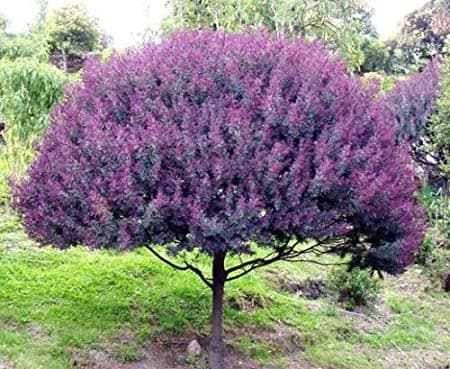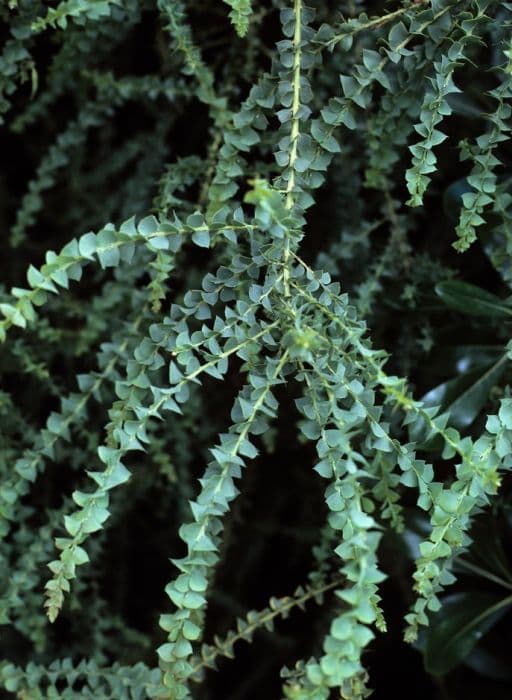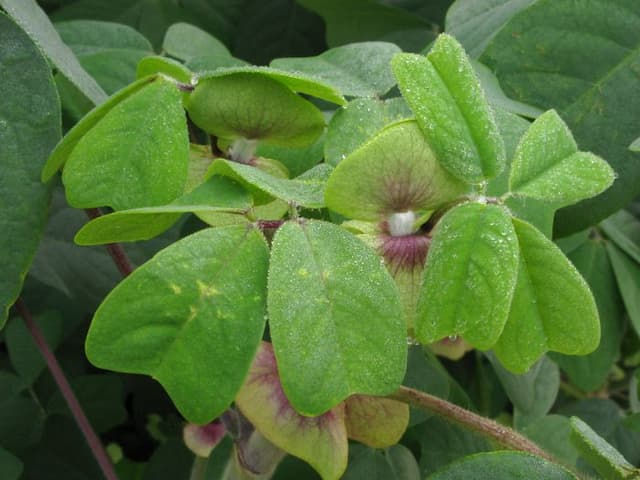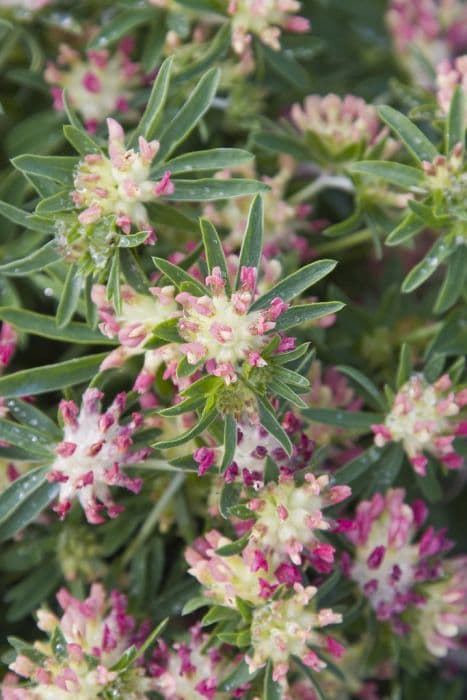Sweet pea Lathyrus odoratus 'Martha Mary'

ABOUT
The plant known as sweet pea 'Martha Mary' is recognized by its enchanting flowers that exude a delightful fragrance, much appreciated in gardens and as cut flowers. The blooms show off a striking color palette that typically combines shades of pink and white. These flowers emerge with a classic sweet pea shape, involving fluttering, ruffled petals that form intricate, butterfly-like structures. As they cluster atop the slender, climbing stems, the vivid flowers present a lovely contrast against the backdrop of the plant's foliage. This sweet pea variety supports itself through tendrils that reach out and cling to supports, allowing the plant to gracefully ascend trellises, fences, and other structures. The leaves are small and typically have a fresh, bright green hue that further accentuates the beauty of the blossoms. Generously filled with flowers during its blooming season, 'Martha Mary' becomes a bountiful display of sweetness and charm. Although as a climbing plant it can reach certain heights and spreads, it maintains a delicate and manageable presence in the garden, bringing vertical interest without overwhelming the landscape.
About this plant
 Names
NamesFamily
Fabaceae
Synonyms
Sweet Pea, Everlasting Pea
Common names
Lathyrus odoratus.
 Toxicity
ToxicityTo humans
Sweet pea, including the Lathyrus odoratus 'Martha Mary' variety, is considered mildly toxic to humans if ingested. The seeds and seed pods are the most toxic parts of the plant. If someone consumes a significant quantity of the seeds or seed pods, they might experience symptoms like nausea, convulsions, and potentially damage to the central nervous system. Chronic ingestion can lead to a condition known as lathyrism, which can result in muscle weakness and paralysis.
To pets
Sweet pea, including the Lathyrus odoratus 'Martha Mary' variety, is also toxic to pets. The seeds and seed pods pose the greatest risk if ingested by animals. If a pet eats sweet pea seeds or pods, they may exhibit symptoms such as vomiting, diarrhea, or seizures. Severe cases of poisoning could potentially lead to paralysis or more serious neurological effects. It is important to prevent pets from accessing and ingesting any part of the sweet pea plant to avoid these potential health issues.
 Characteristics
CharacteristicsLife cycle
Annuals
Foliage type
Deciduous
Color of leaves
Green
Flower color
Varies
Height
6 feet (1.8 meters)
Spread
1 foot (0.3 meters)
Plant type
Climber
Hardiness zones
Varies
Native area
Mediterranean
Benefits
 General Benefits
General Benefits- Aesthetic Appeal: Sweet peas, including the 'Martha Mary' variety, are popular for their vibrant colors and delicate flowers, which enhance the beauty of gardens and landscapes.
- Fragrance: Sweet peas are known for their distinctive and pleasant fragrance, which can add a delightful scent to gardens and floral arrangements.
- Attracts Pollinators: Sweet peas can attract beneficial pollinators such as bees and butterflies to the garden, aiding in the pollination of other plants.
- Vertical Interest: With their climbing habit, sweet peas can be grown on trellises or supports, adding vertical interest and maximizing garden space.
- Edible Flowers: Some sweet pea varieties produce edible flowers, which can be used to add color and a mild, sweet flavor to salads and other dishes.
- Cut Flowers: The blooms from sweet peas are popular as cut flowers due to their beauty and fragrance, ideal for bouquets and arrangements.
- Easy to Grow: Sweet peas are generally easy to cultivate, making them a good choice for novice gardeners and those looking for low-maintenance plants.
- Variety of Uses: Beyond their use in gardens, sweet pea flowers can be used in crafts, such as making potpourri, or for decorating cakes and desserts.
 Medical Properties
Medical PropertiesThis plant is not used for medical purposes.
 Air-purifying Qualities
Air-purifying QualitiesThis plant is not specifically known for air purifying qualities.
 Other Uses
Other Uses- Lathyrus odoratus 'Martha Mary', commonly known as Sweet Pea, can be used as a natural dye for fabrics or yarn, with the petals giving a range of colors from soft greens to yellows.
- The stems of Sweet Peas are strong and flexible and can be woven into small, decorative baskets or eco-friendly garden ties for supporting other plants.
- Sweet Pea petals are sometimes used in the crafting of natural potpourri mixtures due to their vibrant colors and pleasant scent, adding an aesthetic and fragrant touch to homes.
- With its distinctive flowers, the Sweet Pea can serve as an inspiration for artists and designers, influencing patterns in textiles, wallpapers, or other decorative motifs.
- After the blooms have faded, the dried seed pods of the Sweet Pea can be used in floral arrangements or as a part of a rustic decoration theme.
- Sweet Pea petals can be gently pressed and used in creating personalized stationery or bookmarks, capitalizing on their texture and color for a botanical touch.
- During themed events or garden parties, Sweet Pea flowers can be floated in a bowl of water for a simple and elegant table centerpiece.
- Children can engage in a learning activity by using the seeds of Sweet Pea for basic plant biology lessons, studying the life cycle from germination to flowering.
- The distinct fragrance of Sweet Pea flowers can be captured through enfleurage, a process to create natural, fragrant oils or solid perfumes.
- As a form of edible art, Sweet Pea petals can be used to decorate cakes and pastries for an edible floral accent, though the Sweet Pea plant is not edible and care should be taken to remove them before ingestion.
Interesting Facts
 Feng Shui
Feng ShuiSweet pea is not used in Feng Shui practice.
 Zodiac Sign Compitability
Zodiac Sign CompitabilitySweet pea is not used in astrology practice.
 Plant Symbolism
Plant Symbolism- Blissful Pleasure: Sweet peas, which Lathyrus odoratus is commonly known as, are often associated with experiencing blissful pleasure due to their delightful fragrance and delicate appearance.
- Goodbye or Departure: Because of their fleeting nature, sweet peas can symbolize a farewell or the end of a pleasurable time, just as saying goodbye to a loved one after a joyful visit.
- Thankfulness: Giving sweet peas as a gift can express thanks for a lovely time or for the pleasure of someone's company, making them a symbol of gratitude.
- Delicate or Fleeting Nature: The sweet pea's tender blooms and short lifespan are often representative of delicate or ephemeral experiences in life.
 Water
WaterSweet peas, including the variety 'Martha Mary', prefer a consistent moisture level and should be watered once the soil begins to dry out. During active growth periods and especially in the warmer seasons, this typically means watering approximately once a week with one to two gallons per plant, depending on the weather conditions and soil drainage. It's essential to avoid overwatering, as sweet peas do not like to sit in waterlogged soil. The goal is to maintain damp but not soggy soil. During rainy spells, reduce the frequency of watering to compensate for natural precipitation.
 Light
LightSweet peas like 'Martha Mary' flourish in full sun but can tolerate partial shade, especially in hotter climates where they appreciate some respite from the intense afternoon heat. They perform best with at least six hours of direct sunlight daily, so positioning them in a spot that receives plenty of morning sunlight with some dappled afternoon shade is ideal for optimal growth and flowering.
 Temperature
TemperatureSweet peas, including 'Martha Mary', are cool season flowers that thrive in temperatures between 55°F to 65°F but can handle short periods of frost down to about 25°F. They prefer cooler weather and start to falter in temperatures above 75°F. The ideal growth conditions for sweet peas are in a location that stays within this temperate range, avoiding the extremes of summer's heat or winter's deep freeze.
 Pruning
PruningPruning sweet peas like 'Martha Mary' encourages bushier growth and more blooms. Pinch out the growing tips after the plant has developed several pairs of true leaves to promote side shoots. Regularly deadhead or cut flowers to encourage continuous blooming. The best time for extensive pruning is in late winter or early spring, just before the new growth begins.
 Cleaning
CleaningAs needed
 Soil
SoilThe Sweet Pea 'Martha Mary' thrives best in well-draining, rich soil with a pH ranging from 6.0 to 7.5. A mixture of loamy soil, peat, compost, and a bit of sand for improved drainage would create an ideal environment. Prior to planting, incorporating aged manure or a balanced granular fertilizer can encourage strong growth.
 Repotting
RepottingSweet Pea 'Martha Mary' typically does not require frequent repotting as they are annual plants and complete their lifecycle within one year. However, if started in containers, they may need transplanting once they outgrow their initial pot or when it is time to move them outdoors.
 Humidity & Misting
Humidity & MistingSweet Peas, including 'Martha Mary', prefer moderate humidity levels; they do not thrive in overly dry or excessively humid conditions. Aim to maintain relative humidity around 40-60% for optimal growth.
 Suitable locations
Suitable locationsIndoor
Place Sweet Pea 'Martha Mary' in a sunny spot and support climbing.
Outdoor
Plant Sweet Pea 'Martha Mary' in sun, with trellis for support.
Hardiness zone
2-11 USDA
 Life cycle
Life cycleSweet pea 'Martha Mary' begins its life cycle as a seed, typically sown in late winter or early spring, germinating in one to three weeks in warm, moist soil. The seedling emerges and develops into a young plant with a climbing habit, requiring support as it grows and twines. Its foliage matures, producing compound leaves with tendrils that grasp onto nearby structures or supports. During the late spring to early summer, it enters the flowering stage, with fragrant, colorful blossoms that attract pollinators such as bees and butterflies. After pollination, the flowers give way to seed pods, which mature by late summer, eventually drying and releasing seeds. The plant is an annual, completing its life cycle within one year and depending on seed dispersal for propagation in subsequent seasons.
 Propogation
PropogationPropogation time
Spring-Summer
Lathyrus odoratus, commonly known as sweet pea, is typically propagated through seeds. Seasonally, the best time for sowing sweet pea seeds is in late winter or early spring, allowing for a strong root system to be established before the plants start vigorous growth in warmer weather. The popular method involves soaking the seeds in water for 24 hours to soften the seed coat, which can help improve germination rates. After soaking, the seeds are sown in well-draining soil at a depth of about 1 inch (2.5 centimeters), spaced 2 to 3 inches (about 5 to 7.5 centimeters) apart, in pots or directly in the ground where they are to grow. The soil should be kept moist but not waterlogged while the seeds germinate, which typically takes 10 to 21 days depending on the soil temperature and conditions. Once seedlings emerge and reach a sufficient size, they should be thinned out or transplanted to allow adequate space for growth.









